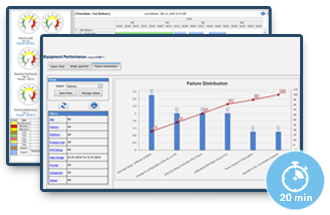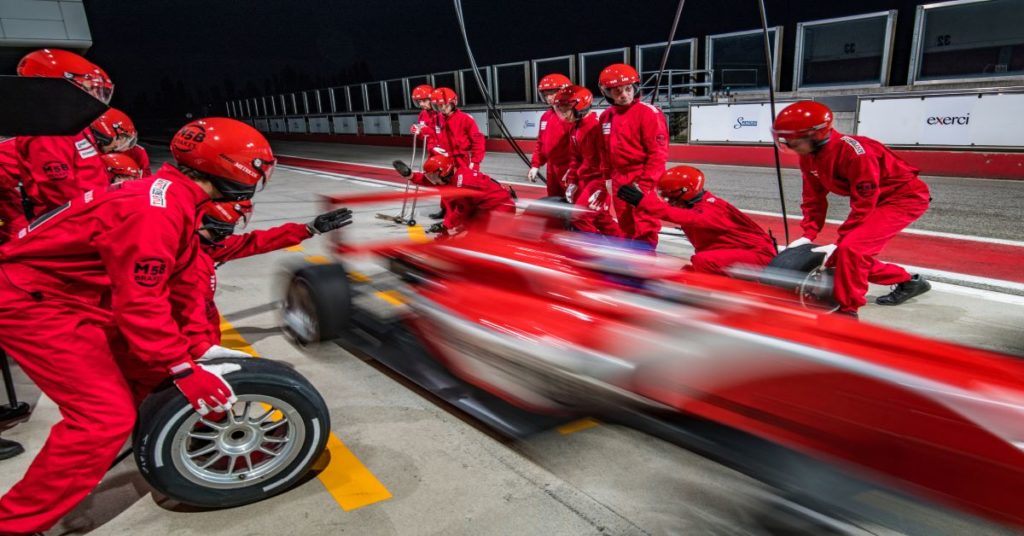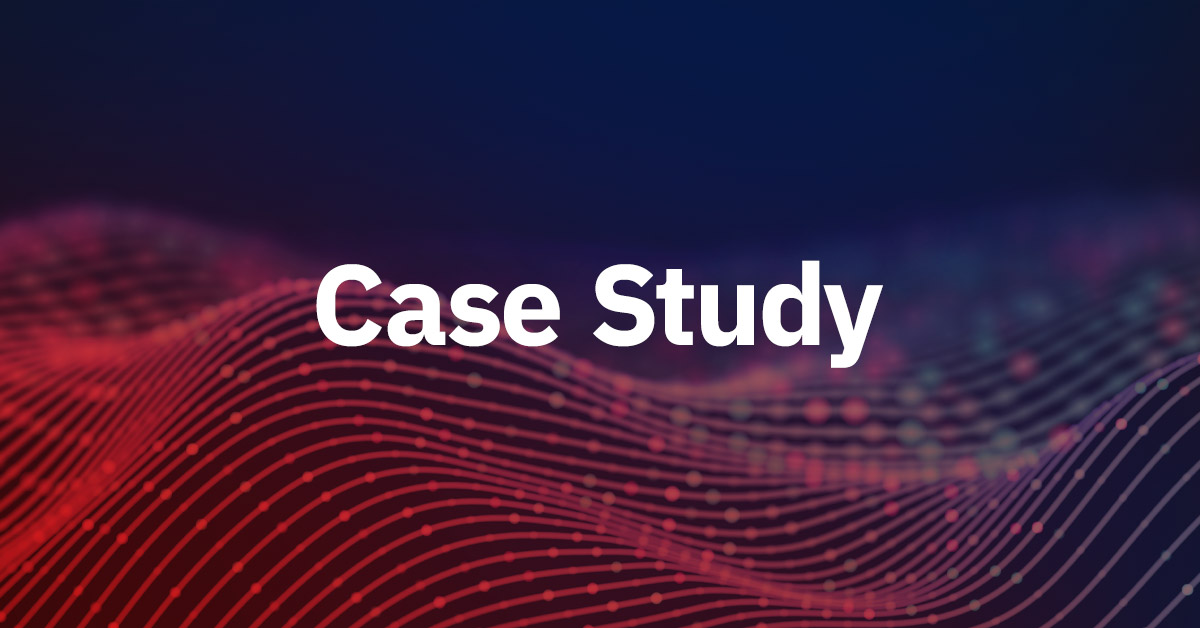

Driving test equipment utilization is critical to meeting today’s competitive challenges. Freeing up capacity for innovation and growth has never been more important. Companies are being asked to bring products to market in half the time and reduce their cost of operations up to 50% to succeed against aggressive global competitors. In hi-tech manufacturing businesses, this means eradicating the pernicious habit causing consistently low test equipment utilization – generally in the range of 15% to 25% – as well as process disruptions and bad moods that limit people’s ability to move with velocity.
For an in-depth video explanation about the issues and our approach our CEO recently spoke at the International Test and Evaluation Association Symposium, “Test in an Age of Rapid Change” on their Digital Transformation track. The presentation, Digital Transformation: Asset Management 5.0, is a study about the mechanisms that produce such low utilization and what to do to drive it higher. In this case, from 15% to over 60%. Listen to a customer speak about their experience toward the end of the video at 27:48. He’ll explain how they produced…
- 50% capital and support cost savings (things like calibration and repair)
- 35% reduction in time-to-market
- 50% reduced equipment obsolescence
- Better career opportunities for the team
That One Bad Habit That Kills Test Equipment Utilization and Costs You Millions.
The habit is hoarding, and we write about it extensively in our blog. It is so damaging to test equipment utilization, cost competitiveness, and speed. Hoarding is a human phenomenon and is the most significant contributor to asset costs in every hi-tech engineering operation we’ve ever seen. It was 20 years ago at Sente’s founding when we first encountered it. Aside from the places we (or others) have ended it, it remains today. Across most of the industry. Hoarding results in excess costs that slow businesses down and can make them uncompetitive.
-
They spend 25% to 50% of their capital budget on unnecessary equipment. They could be investing it in better equipment or other capabilities.
-
They overspend by 25% to 50% calibrating and repairing equipment. They could free than money up for better purposes.
-
Users spend 10% of their time being distracted searching for or dealing with non-value-added administrative burdens. They could be inventing.
Our Results are Uncommon. Our Approach is too, by Definition.
Our approach is not traditional which is why we’ve been recognized for outstanding achievements with our software and services. We are the only enterprise asset management company with a significant focus on human intentions and behavior because, as it turns out, people drive results. People drive test equipment utilization, high and low. Knowing what focuses are most critical to producing truly game-changing results is just as critical for asset management as it is for any other endeavor. Our CEO writes about this in “Is Your Team Ready for its Moneyball Moment?” “Moneyball” is the story of how a new approach to baseball enabled the Oakland A’s to set a record for consecutive wins, tie for total wins, and do it all spending 80% less than their competition. They changed the game of baseball as we are changing the game in enterprise asset management.
Increase Test Equipment Utilization: The Scireo Algorithm That Ends Hoarding.
Asset management customer and user Intentions → aEAM Accountability Practices → Trust → Truth → End of Hoarding → Increase to Test Equipment Utilization → Game-Changing Results.
Customers of asset management are tasked with developing products rapidly and at a low cost. To do this they must have the equipment they need, when they need it, with the capabilities they need, in good working order. They don’t want to have to worry or expend any energy outside of their mission. They must stay focused on design highly valuable products quickly.
When asset management customers can anticipate they will get these concerns cared for by the asset management process and tools they will trust it and they will tell the truth because they won’t be concerned with being betrayed – they know the truth will help them – and hoarding stops.
Accountability Practices Enable the Algorithm to End Hoarding.
Accountability practices produce visibility to know if people are keeping their commitments and, at the same time, produce incentives for them to keep their commitments. The mechanisms that produce distrust and lead to hoarding are well understood. Practices for making and fulfilling user requests for equipment to agreed-upon standards are critical to success. Metrics that measure performance are established and reported. Once trust builds in this process the beginning of the end for hoarding is at hand.
Test Equipment Utilization: A critical measure
Hoarding is measured with proprietary algorithms that include test equipment utilization. When a user hoards, the asset management team can know. Sometimes engineers and users still hoard mindlessly because it is a habit. They just need reminding. Other times they are hoarding because they are still habitually distrustful. Sometimes their distrust is ungrounded and can be changed by communicating metrics. Over time – and reinforced by incentives, compelling narratives, and reminders – the hoarding stops.
When Hoarding Ends, Test Equipment Utilization Soars, and New Possibilities Open.
We call it, “Working Together, Better”. When people stop hoarding equipment it’s because their team’s mindset has shifted and their openness to sharing improves. They can begin to see measurable improvements to their performance that aren’t just incremental but step change. Utilization doubles, speed begins to increase and resources that were wasted on unnecessary equipment acquisition, equipment services, or the administrative burdens and time wasted in both of those processes are applied to improved testing capability and growth.
Scireo aEAM: Your Asset Management Happy Place.
With Scireo aEAM solutions people work on what they love working on and have the equipment to do the job right, the way they know it needs to be done. Management begins to notice the improvements and recognize them for the improved outcomes they are producing with promotions and management awards. We’ve even seen team awarded with trips. They’ve freed themselves from “The Grind” we’ve recently written about. Work becomes a happy place not a place to be crushed under expectations you have no idea how to fulfill.
Request a Demo

See how Scireo aEAM Software drops asset and support costs by 50% while accelerating time-to-market 2X.
Relevant Content
Asset Management 5.0: Designed for Speed & Competitiveness
Accelerated Enterprise Asset Management (aEAM) is an award-winning software and services suite used by companies with complex, asset-intensive operations and demanding competitive requirements for better than incremental improvements to speed, agility, and cost-effectiveness. The same old solutions won’t work. This is where Scireo aEAM comes in oto help transform your business. The Results with Asset…
Avoid “The Grind.” Catch the Next Asset Management Wave!
According to the dictionary, when you grind something you use force to wear down, crush, or pulverize it. When we use “grind” to describe our work the characterization is stark. The “grind” produces moods of resignation, distrust, cynicism, and fatigue that are as unrelenting as the forces producing them. We don’t have to work in…
Case Study: Semiconductor Company Increases Test Equipment Utilization
This company had a leading market share and wanted to solidify its position with its strategic customers by installing test capabilities on their sites. See how a 40% increase in bench utilization funded the project.
Equipment Utilization Case Study: Broadband Service Provider
The company was growing double digits but needed to free up investment from operations for growth projects. See how they tripled utilization, freed up capital and resources to enable that investment.
Notable Quotes
“We wanted to understand Sente’s Total Cost of Ownership model – which was very detailed – and make sure the cost savings were real. Our own analysis confirmed that TRM would save us money. But at the end of the day, we moved forward because of the increased capacity the solution would provide to our engineering organization.”
Director of Finance








